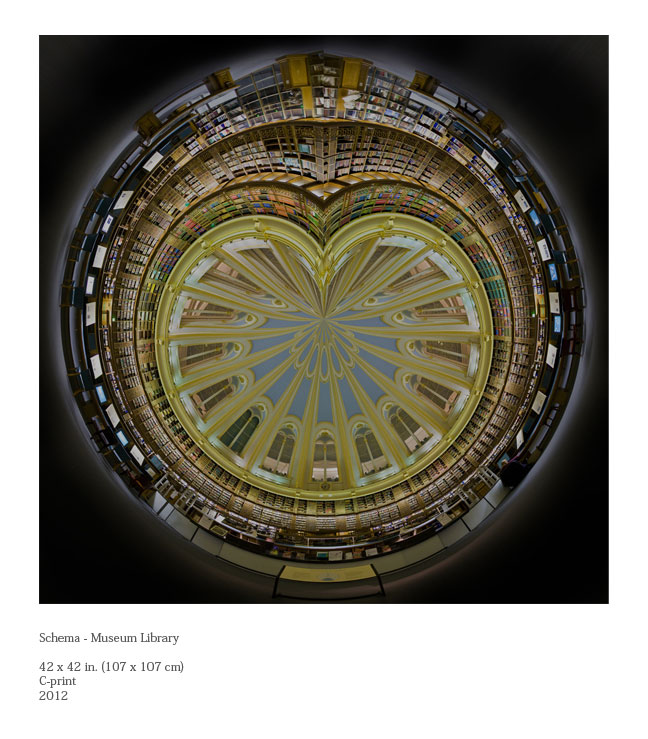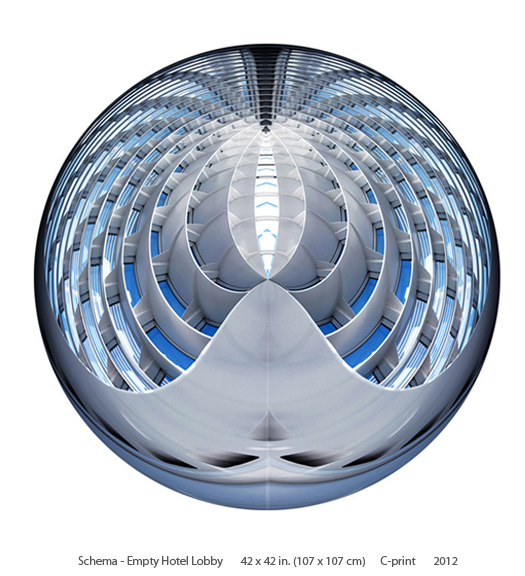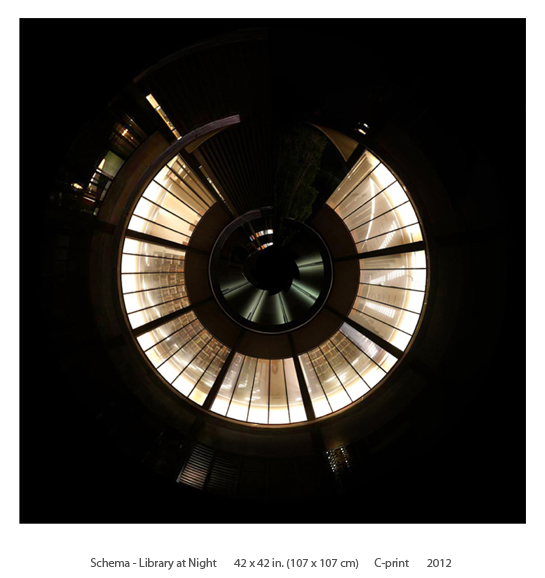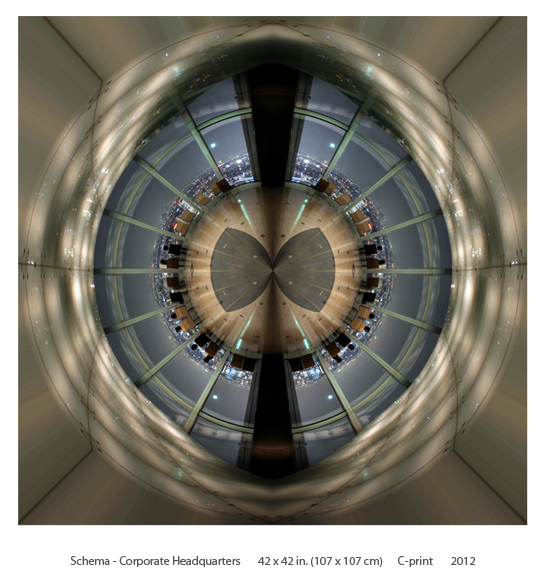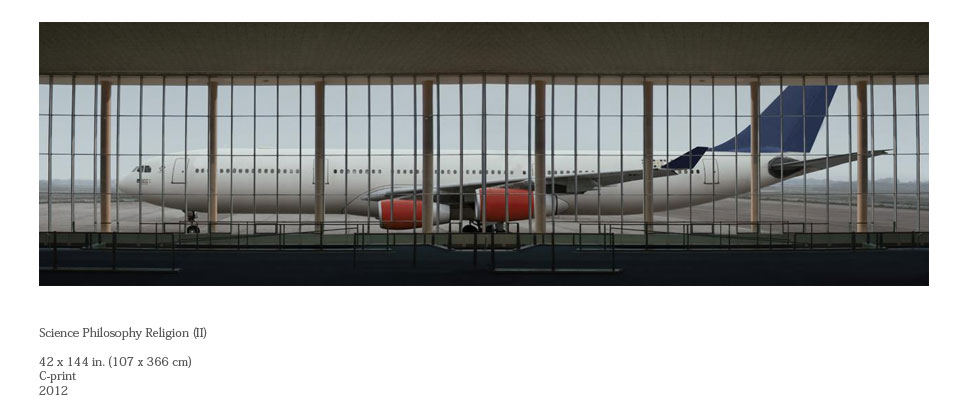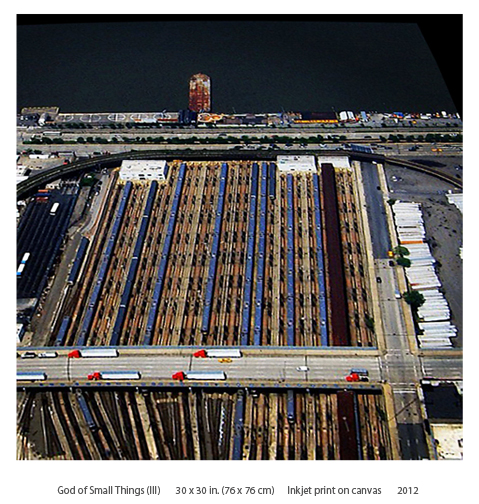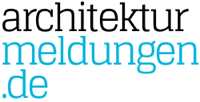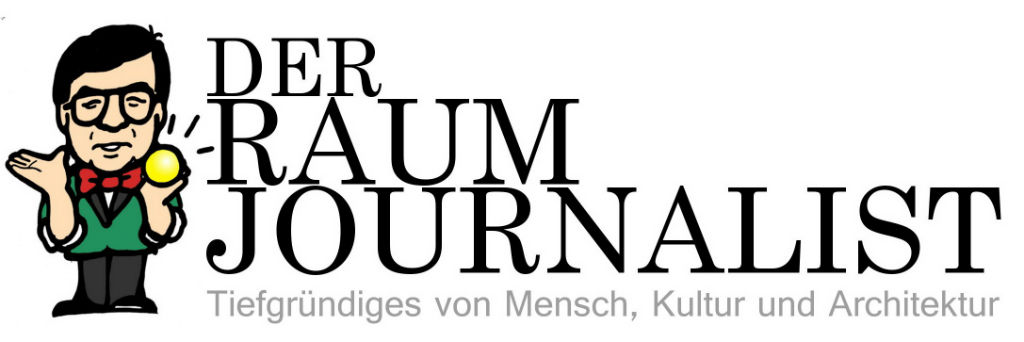ŌĆ£The globalization is the new religion and its images are its scriptures.ŌĆØ INTERVIEW with Sajjad Ahmed
Sajjad AhmedŌĆÖs series ŌĆ£Small Round Organized Capitalist WorldŌĆØ reflects on questions of globalization and its visualizations. The Pakistan based artist says, ŌĆ£the Capitalist mode of society can be described as a functionality of abstraction, considering the very na├»ve, preliminary ways of seeing.ŌĆ©In this vastness of universe, our small little world contains open spaces, current-age venues of knowledge, entertainment, consumerism, transforming into abstract claustrophobic spaces (…).ŌĆ£┬ĀCertainly globalization develops beliefs that assume more and more religious traits.
Reverting to Renaissance Oculus painting, Ahmed transforms typical ŌĆ£globalizedŌĆØ and spaces, like corporate headquarters, or buildings where masses assemble, like stadiums or libraries, into geometric patterns. Watching them from afar, this vantage point puts them into perspective ŌĆō reminiscent of manŌĆÖs first view of Earth from outer space: American astronaut, James Irwin, an astronaut from Apollo 15, the fourth manned landing on the Moon, in July 1971, described Earth as ŌĆ£ŌĆ”an ornament hanging in the blackness of space. As we got farther and farther away it diminished in size. Finally it shrank to the size of a marble, the most beautiful marble you can imagine. That beautiful, warm, living object looked so fragile, so delicate, that if you touched it with a finger it would crumble and fall apartŌĆ”ŌĆØ
Since 2006, Ahmed has been actively pursuing his studio practice, producing and exhibiting work. His works were shown in two solo and various group exhibitions in Pakistan and abroad. Furthermore he was one of the finalists of the Sovereign Asian Art Prize 2009, while his artwork was included in academic course-work by Hong Kong Baptist University, Hong Kong in 2008 and City University of New York (CUNY) New York, USA in 2010. Also, Ahmed have taught at Beaconhouse National University for some years and was part of a few micro-scale philanthropic projects.
In an email conversation with deconarch.com, Sajjad Ahmed explains his ŌĆ£Small Round WorldŌĆØ series, what inspires him and replies to the probably most difficult question, ŌĆ£Why artŌĆØ.
all images┬Ā(c) Sajjad Ahmed
INTERVIEW
Tell us more about your ŌĆ£Small Round WorldŌĆ£ series ŌĆō what inspired you to do it?
I have been attempting to visually translate the philosophical ideas of existentialism. It is an abstract subject to be talked or written about, so a consistent interest to visual representation of something abstract has been there as far as my practice is concerned. ŌĆ£Small Round WorldŌĆØ is an attempt to communicate a subjective view of universe, its functionality as a total system and in individual lives. I have chosen the visual approach of Oculus paintings; the religious paintings from Renaissance. The choice of using a particular visual method, which was deployed originally, for visuals in a religious architectural space, provided me with a concise framework for seeing todayŌĆÖs time, the globalization as the new religion. The globalization is the new religion and its images its scriptures. In place of gods, this world has multiplicities of ungainly systems of businesses, governments, power entities, technology and communications. These systems/multiplicities work enigmatically, cutting across the world, encroaching our daily lives in many courses. These changes are intuitive; they are to the further side of the understanding of the immense number of people whose lives they touch.
Reality is subdued in the conception of these works. A visual assembly dictates the time, space, events…numerous interconnected representational entities are entwined together, persisted by a whole structural attitude, in order to portray reality in a descriptive manner. The world no longer decodes its own images, but subsists in their function. ŌĆ£Small Round WorldŌĆØ is visual assemblage of anthropology of age of information.
WhatŌĆÖs the core subject of your work? What are you interested in?
There is more than one subject that I focus in my practice; those multiple subjects are like paths leading to one central area of interest, ŌĆśTotality, Entirety, ExistenceŌĆ”ŌĆÖ
I choose to look at the world through a framework of globalization, significance of visual culture, transition of a 4-dimensional existence into a mortal two-dimensional pictorial surface. I am immensely interested in looking at the world in its entirety, in its system of totality through a choice of spaces from todayŌĆÖs life-styles from urbanity.
Where do you find your motives and topics?
Rather than finding, I discover the motives, subjects through any and every living experience that possibly grabs my attention. It could be anything from watching TV to riding a lift/escalator. The range of visual space is enormous, to ever-expanding universe, beyond the walls of void. I discover the subjects from whatever maximum number of experiences I can have in an individual short life.
You are working with the assemblage of found image material. What role does the medium play in your practice?
I am open towards choice of mediums, and ultimately the ideas define them. I have worked with photo-based mediums, video, installation, performance…The range of medium is interesting as it can involve humans as medium as well as using an auction to call it a medium and generating a statement through that.
How is your working process?
There is no single approach towards the working process, hence no single response to the question. The working process is strictly dependent on the nature of idea. The ideas determine the process, medium, even the evolution of thought-process. On a whole, the processes so far have involved photographing, digital alteration, working with some software/electronics engineering as well as painting.
Are there role models, particularly inspiring your work?
Sure, there are specific influences like Candida H├Čfer, Mark Rothko, Sarah Morris, Sol Levitt ŌĆ” besides these individuals, a great deal of collective human efforts in exploration and transformation of universe is a tremendous inspiration. The knowledge of these developments/evolutions informs my work significantly. Also it is interesting for me to notice that a German filmmaker Tom TykwerŌĆÖs approach and the whole school of Bernd & Hilla Becher, also from Germany, are influences, are admirable.
Admittedly, itŌĆÖs a difficult question, but: Why Art?
This involves the privacy of extremely immediate interests/incidents and the external unstoppable influences by the bigger world, precisely.
I grew up in a scenic provincial town in Pakistan in 80s, 90s before moving to an urban locality. It is one of the major garrison towns, and as a teenager, I found myself occupied with things other than that a garrison town can offer. Now I look back and understand that it was the visuals that provided to be the sole interest point, there had to be an interest point, as long as my memory helps, be it science diagrams or newspapers I saw at home or a family member paintingŌĆ”a parallel interest in visuals developed before enrolling in a visual art programme, and when it came to enroll in a professional Bachelors programme, I asked myself the same question ŌĆśWhy ArtŌĆÖ and the answer was inherent in the question, ŌĆśWhy notŌĆÖŌĆ”why not, while it provided me with the greatest pleasure during my formative yearsŌĆ”
Later, I was lucky to have found myself in the company of some very interesting artists, which include some big names today; it was a time before Pakistan showed actively on the world art map. There was a very appealing air around and of course that also contributed towards the decision.
Also the process/track-record/career is not the ends, itŌĆÖs a means to finding more answers that might be there, to the question of ŌĆśWhy ArtŌĆÖŌĆ”
Give us a little peek: What are you currently working on?
I am continuing with the ideas about spaces, and now its getting focused in terms of industries, life-styles ŌĆ” for instance, I am working on a body of work, ŌĆ£Science Philosophy ReligionŌĆØ using the visual of spaces in air-travel, spaces within the interior of human body, as well as maps.
Where can we see your work? Somewhere in Germany, too?
My work is part of various permanent collections in India, Singapore, China, USA, UK, Middle East and Europe. In Germany, I have exhibited at Hype Gallery at their New Media Festival as well as at Mueller & Plate in 2006 and 2007.
I would like to take some liberty here and deviate from your question. I have a sense of relation to Germany specially since I have done a public art project in Pakistan in collaboration with 2 German artists, exhibited there and a major part of my tutors/advisors at university included practicing/academic art-historians, artists from Germany including Sophie Ernst, Julia Ahmed, Gwendolyn Kulick, I am greatly thankful to them. I am pleased to have some great friends there.
Sajjad, thanks so much for telling us about your work!

